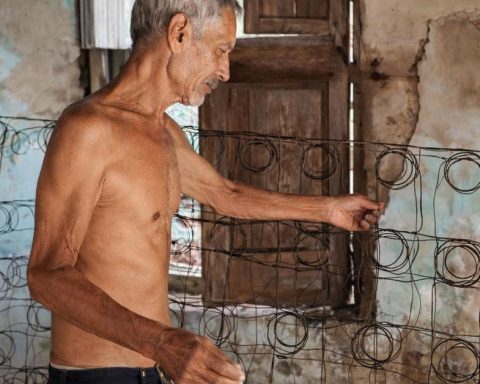Madrid/The health authorities managed, against all odds, to maintain an infant mortality rate exactly the same as that of 2023: 7.1 deaths per 1,000 live births, a figure that leaves a bittersweet taste in the sector. When, in the midst of rampant precariousness, a worsening could be expected – especially since in the first semester the amount will be 7.4– the situation has been contained, but we do not lose sight of the fact that just six years ago, in 2018, the Island had a rate of 3.9, better than that of many first world countries.
The number has not only almost doubled, but it is also accompanied by a decline: maternal deaths grew compared to 2023, going from 38.7 per 100,000 to 40.6. In this sense, the Island’s data has been relatively high in a stable manner, since in 2017 the rate was 36, but in 2018 it reached 43. The only data that shot up in a very anomalous way occurred in 2021, the worst year of the pandemic on the Island, when 176.6 women died per 100,000 live births. Apart from that, Cuba’s figures are similar to those of its surrounding countries, very far from the 2 in Poland, although also from the more than 300 that occur in Africa, with Chad – whose rate exceeds 2,000 – as a dramatic record.
“Among the joint actions carried out between Health institutions and other sectors, to care for this population group, the reinforcement of care for pre-existing diseases during pregnancy stands out; the comprehensive management of hypertensive disease during pregnancy; measures to reduce the incidence of preterm birth, as well as greater monitoring of high obstetric risk,” said the Ministry of Public Health in a statement this Thursday in which it finally unifies the data that some provinces had been advancing in previous weeks.
The only data that shot up in a very anomalous way occurred in 2021, the worst year of the pandemic on the Island, when 176.6 women died per 100,000 live births.
Infant mortality remains substantially high in Isla de la Juventud, with 8.8 (compared to 9.3 last year) per 1,000 live births. The same occurs in Camagüey (7.5), Cienfuegos (7.4), Mayabeque (7.3), Guantánamo (7.3), where although the amount is higher than the national average, the data improved if compared with those of 2023.
Granma (7), Matanzas (6.7), Las Tunas (6.3), Ciego de Ávila (5.8), Artemisa (5.9), and Holguín (5.3) close an intermediate block, leaving the best place for Pinar del Río (4.2) and Sancti Spíritus, which with a rate of 3.6 reaches the best figure on the Island. According to Francisco García González,director of the Maternal and Child Care Program (Pami), to Escambray This Wednesday, the province is not one of those that has the most human resources problems, but it has developed a strategy to make up for the lack.
“We have enlisted the help of Primary Care with certified Comprehensive General Medicine specialists, who provide medical care in maternity homes and in the Provincial Maternity Hospital. We have also balanced the teams on duty with more experienced teachers with others with less experience, to achieve a much better result,” he said, although he also wanted to make it clear that any death is a failure.
García González also referred to the decrease in the number of births, which went from 3,119 in 2023 to 2,490, 20% less. The data is less dramatic than that of Cienfuegos, which lost 25%, but it reflects a very clear trend that this Thursday confirmed the national data.
In 2024, 71,374 babies were born on the Island, 19,075 fewer than in 2023, 21% less. The figure is once again the lowest since the middle of the last century and confirms that the declines are increasingly pronounced, since in 2020 alone there were 105,616 births.
The Ministry’s note has not provided the infant mortality data for Santiago de Cuba, nor that for Havana. Neither of them has appeared in the provincial press, for unknown reasons, although one would expect it to be worse than that of previous years, since most provinces achieved significant decreases (up to two points in many cases) and, nevertheless , the global data is the same.
In the Ministry’s note, the infant mortality data for Santiago de Cuba has not been provided, nor for Havana.
Cuban doctors managed to ensure that there were 133 fewer deaths than in 2023 in children under one year old, although the total number is not given, the same as in children under five, a group in which there were 101 fewer deaths. The note is defended by data obtained “in the midst of so many complexities that the Cuban Health System faced in 2024, associated with the effects of the intensification of the economic, commercial and financial blockade imposed by the Government of the United States.”
There is no mention, however, of the 24,000 doctors on an “international mission,” who are earning foreign currency for the State, leaving important gaps in the Pami. To them we should add the 32,000 doctors that, according to the National Office of Statistics and Information, Cuba has lost this year due to exile or departure to the private sector.
The Ministry’s note insists on the importance of developing “strategies aimed at reducing teenage pregnancy, improving family planning services, as well as increasing the resolution of the Human Assisted Reproduction Network.”
Among the primary objectives is to reduce the incidence of low birth weight or increase exclusive breastfeeding until the sixth month of life and supplemented breastfeeding until two years of age. However, nutritional deficiencies on the Island or the lack of access to a varied, healthy and balanced diet affect these indicators, with no prospects for anything other than worsening.


















